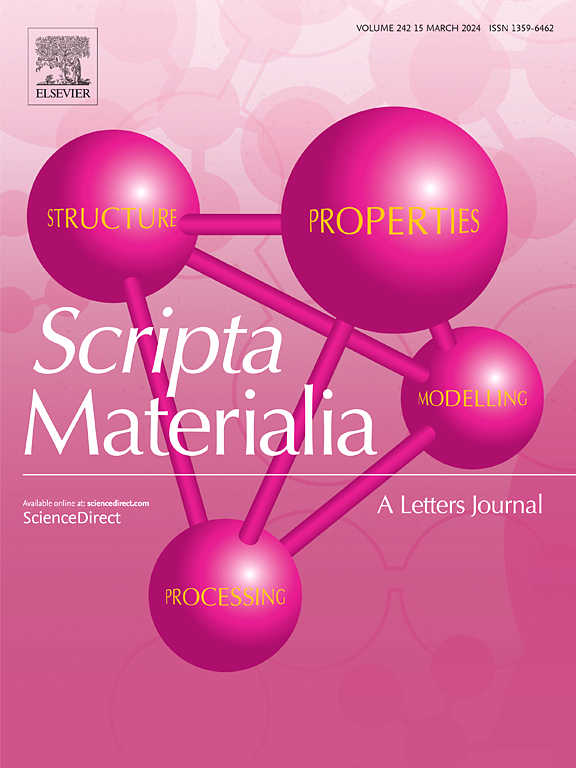Strain partitioning-induced anisotropy in thermomechanically processed magnesium alloys comprised of earth-abundant elements
IF 5.3
2区 材料科学
Q2 MATERIALS SCIENCE, MULTIDISCIPLINARY
引用次数: 0
Abstract
Dilute Mg alloys based upon earth-abundant elements, e.g., Al, Ca, and Zn have attractive combinations of strength, ductility, and workability. Even higher strength can be obtained in work-hardened material without the heat treatments required to induce Guinier-Preston zone strengthening of previously studied versions of these alloys. This stems from a slightly stronger crystallographic texture than is present after solutionizing, a high dislocation density, and to a lesser degree, a fine distribution of globular Zn-rich precipitates. The anisotropic plastic response of sheet material is described using an elasto-viscoplastic self-consistent (EVPSC) polycrystal model. Strain partitioning between grains during rolling-induced strain hardening is held responsible for the yield strength, ductility, and especially, strain hardening anisotropy. Texture-induced plastic anisotropy is well-known, but the effect of strong partitioning of strain between variously oriented grains is critical to explain what may be classified as a sort of strain path change (generalized Bauschinger) effect.

求助全文
约1分钟内获得全文
求助全文
来源期刊

Scripta Materialia
工程技术-材料科学:综合
CiteScore
11.40
自引率
5.00%
发文量
581
审稿时长
34 days
期刊介绍:
Scripta Materialia is a LETTERS journal of Acta Materialia, providing a forum for the rapid publication of short communications on the relationship between the structure and the properties of inorganic materials. The emphasis is on originality rather than incremental research. Short reports on the development of materials with novel or substantially improved properties are also welcomed. Emphasis is on either the functional or mechanical behavior of metals, ceramics and semiconductors at all length scales.
 求助内容:
求助内容: 应助结果提醒方式:
应助结果提醒方式:


